How to Fix Windows Update Error C80003F3?
Several Windows users are encountering the “Windows Update Error C80003F3″ when they try to install to install a particular Windows update or whenever they try to launch the WU utility. The error code is signaling that the computer is out of short-Term Memory (RAM). In most cases, this issue typically occurs if the users have the habit of putting the computer to sleep instead of a Shutdown. 
Windows Update Error C80003F3In more severe cases, this issue effectively breaks the auto-update ability, so users need to resort to manual updating to get their Windows version up to date. Based on our investigations, the issue is reported to occur on Windows 7, Windows 8.1 and Windows 10.
What’s causing the Windows Update Error C80003F3?
We investigated this particular issue by looking into various user reports and by testing out various repair strategies that are recommended by users that were previously affected by the same problem. As it turns out, several different scenarios might spawn this error code. Here’s a shortlist with culprits that might trigger this error message:
- Glitched Windows Update instance – The most common cause that will trigger this error code is when one or more WU components become stuck in a limbo state. In situations like this one, the best approach is to run the Windows Update troubleshooter (a utility capable of identifying most inconsistencies and applying the correct repair strategy automatically).
- The update that’s failing requires a prerequisite – As it turns out, certain updates might display this error code because they require an update that is not yet installed on this particular machine. This typically happens when the user tries to install a non-mandatory update while important security updates are also pending. In this case, you can resolve the issue by installing the Important Updates first.
- Some essential WU services aren’t enabled – Another possibility why you’d encounter this error code is situations where crucial services involved in the WU process are disabled. This can either happen due to manual user intervention or due to a resource optimization chore performed by a Resource Management app. If this scenario is applicable, you should be able to resolve the issue by ensuring that all essential WU services are enabled.
- Corrupted WU component – In more serious cases, this error code might occur due to a persisting WU bug that will not go away conventionally. If certain components become stuck in a limbo state, the only viable fix is to reset every WU component so that you eliminate the possibility of a paralyzed component. This can either be done by using the automated WU agent or by deploying a series of commands in an elevated CMD prompt.
- De-registered Windows Update DDLs – After investigating several users reports, it turns out that this issue can also occur due to a bulk de-registering of important DDLs involved with te WSUS operation. If this scenario is applicable, you should be able to resolve the issue by creating a.a .BAT script that’s capable of re-registering all .DDL files involved in the updating process.
- Overprotective Firewall suite – As it turns out, certain firewall suites might end up blocking the connection between the end-user computer and the WU server. Commodo firewall is most commonly reported for being responsible by affected users (but there might be others). In this case, you will be able to fix the issue by uninstalling the overprotective suite and reverting to the native firewall.
If you’re currently struggling with the same error message, this article will provide you with several different troubleshooting steps. Down below, you’ll a collection of potential fixes that other users in a similar situation have successfully used to resolve the “Windows Update Error C80003F3″.
For the best results, we advise you to follow the methods below in the same order that we arranged them in as they are ordered by efficiency and severity. Eventually, you should encounter a fix that will fix the problem and allow your Windows to self-update regardless of the culprit that’s currently causing the issue.
Let’s begin!
Method 1: Running the Windows Update troubleshooter
Before we explore other repair strategies, you should start by ensuring that Windows is not capable of dealing with the issue on itself. Several users that have been encountering the Windows Update Error C80003F3 have reported that the problem was resolved after they ran the Windows Update troubleshooter.
This built-in utility will analyze the whole WU component for inconsistencies and will recommend a repair strategy if it manages to find a strategy that is suitable for this scenario. Here’s a quick guide on running the Windows Update Troubleshooter:
- Press Windows key + R to open up a Run dialog box. Next, type “ms-settings-troubleshoot” and press Enter to open up the Troubleshooting tab of the Settings app.

Opening the Troubleshooting tab on every Windows version - Once you’re inside the Troubleshooting tab, move over to the right-hand pane and go over to the Get up and running section. Once you get there, click on Windows Update, then click on Run the troubleshooter.
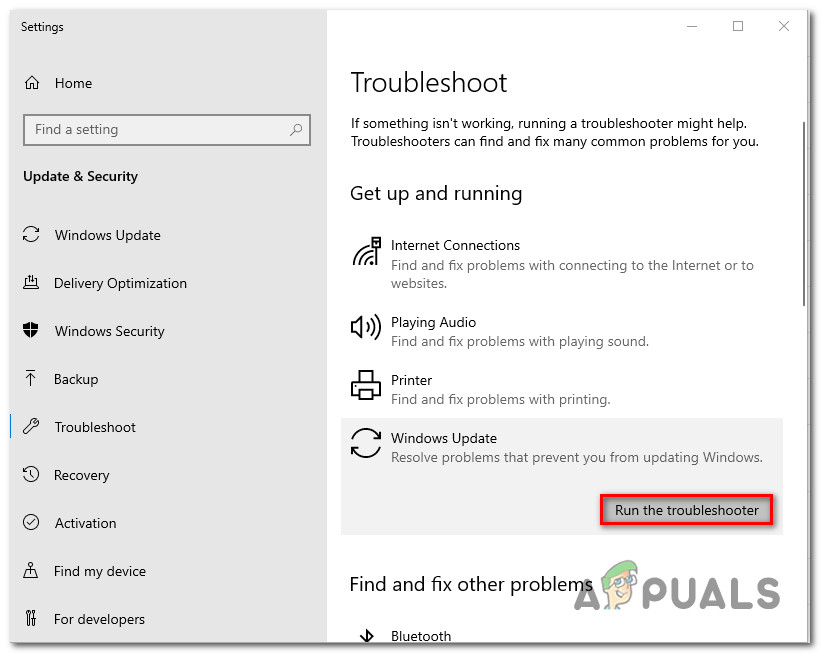
Running the Windows Update troubleshooter - After you manage to start the utility, wait patiently until the initial scan is complete. This will determine whether any of the repair strategies included with the troubleshooter apply to your particular scenario.
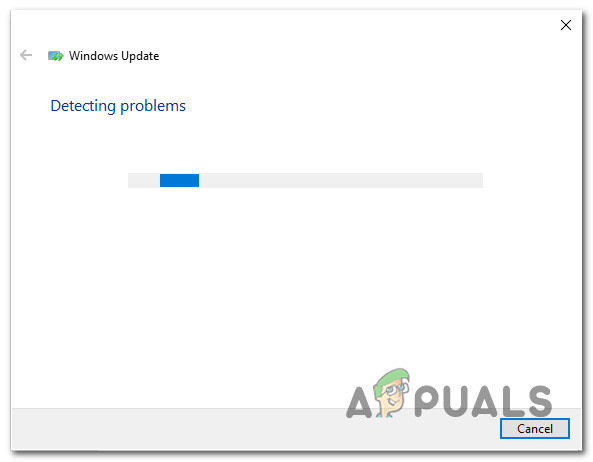
Detecting problem with Windows Update - If a viable fix is identified, you’ll be presented with a new window. In this case, click on Apply this fix and then follow the on-screen instructions to enforce the recommended repair strategy.

Apply this fix - After the fix is successfully applied, restart your computer and see if the issue is now resolved.
If you’re still encountering the Windows Update Error C80003F3, move down to the next method below.
Method 2: Installing Important Updates first
Some Windows updates have prerequisites, meaning that to be installed properly, they need a certain update to be installed first. As some users have reported, this could be the reason why you’re seeing the Error C80003F3 when you try to install a certain Windows update.
You may be trying to install an update that is conditioned by an Important Update. In this case, you should be able to resolve the issue by installing every other pending update first and leave the failing update to install last.
Here’s a quick guide on how to do this:
- Press Windows key + R to open up a Run dialog box. Then, type ”ms-settings:windowsupdate” and press Enter to open up the Windows Update tab of the Settings app.

Opening the Windows Update screen Note: If you’re not using Windows 10, use replace the ”ms-settings:windowsupdate” command with ‘wuapp’.
- Once you’re inside the Windows Update screen, move over to the right-hand pane and click on Check for updates. Then, follow the on-screen prompts to install every update aside from the one that is failing. Look to prioritize Important (Critical updates).
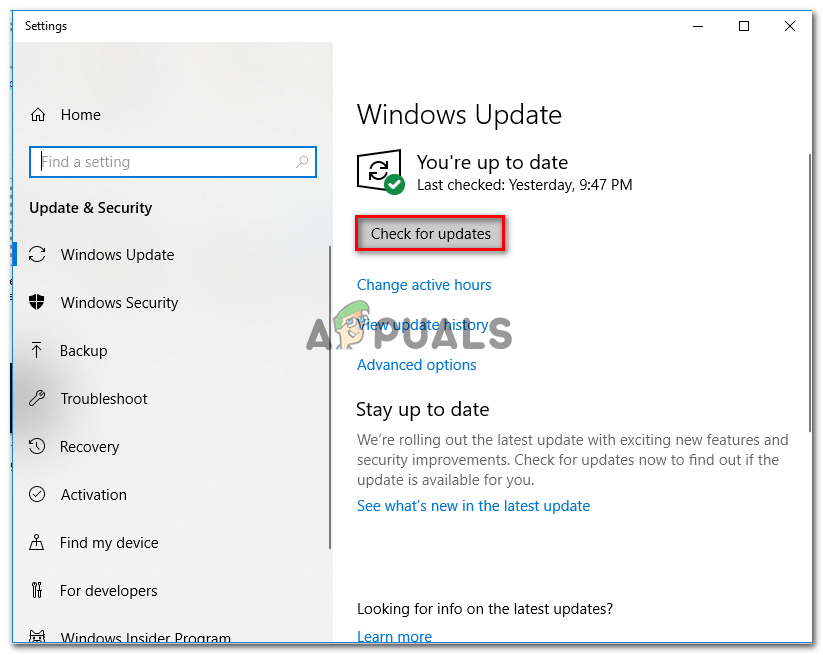
Installing every pending Windows update - After you manage to install every pending update (aside from the one that’s failing), restart your computer and install the pending update once the next startup sequence is complete.
If you’re still encountering the Error C80003F3 or your computer was already up to date, move down to the next potential fix below.
Method 3: Enabling all essential WU services
Another possible scenario in which you’ll see the Windows Update Error C80003F3 are situations where one or multiple services essential to the process of installing pending updates are disabled. If any of these key services, the process of installing the update will eventually fail (often with this error code).
Several affected users that found themselves in a similar situation have reported that they managed to fix the issue by checking the and enabling every essential WU service that wasn’t running. After doing this, the installation of the problematic update completed without issues.
Depending on your technical abilities, two different methods will allow you to ensure that every critical WU service needed for the updating operation is enabled. Both method will allow you to do the same thing, so be sure to choose whatever guide you’re most comfortable with.
Enabling services via Command Prompt
This is the quickest way and most effective method of ensuring that all essential services are running as intended. Here’s a quick guide on enabling all essential WU services via an elevated Command Prompt:
- Press Windows key + R to open up a Run dialog box. Next, type “cmd” inside the text box and press Ctrl + Shift + Enter to open up a Command Prompt with admin access.
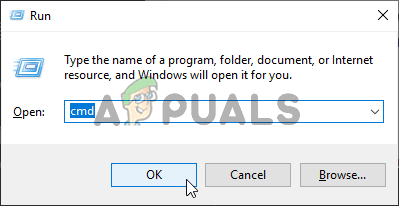
Running Command Prompt Note: If you see the UAC (User Account Control) prompt, click Yes to grant administrative privileges.
- Once you manage to get inside the Elevated Command Prompt window, type the following commands in order and press Enter to modify each Startup type of each essential service to Automatic:
SC config trustedinstaller start=auto SC config bits start=auto SC config cryptsvc start=auto
- After each essential service has been adjusted, restart your machine and see if the issue is resolved at the next system startup.
Enabling all WU services via GUI
If you’re not that fond of using the CMD terminal, there’s also a workaround that will enable you to modify the status of the same WU services by using the Windows GUI – using the Services screen. But be warned, the steps are a little more tedious, but the results are exactly the same. Here’s what you need to do:
- Open up a Run dialog box by pressing Windows key + R. Next, type “services.msc” inside the text box and press Enter to open up the Services screen.

Running the Services tool - After you manage to get inside the Services screen, scroll down through the list of services and locate the Windows Module installer service. Once you see it, double-click on it to open up the Properties screen.

Accessing the Properties screen of the Windows Modules Installer services - Inside the Windows Module Installer Properties screen, go to the General tab and change the Startup type to Automatic, then click on Apply to enforce the changes.
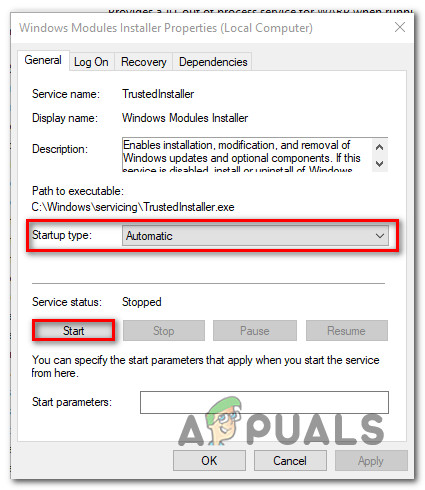
Making the required changes to the Windows Module Installer service. - Next, repeat step 2 and step 3 with both the Cryptographic Service and the Trusted Installed service.
- Once you confirm that all involved services are enabled, restart your computer and see if the issue has been resolved.
If none of the two operations presented above have allowed you to resolve the issue, move down to the next method below.
Method 4: Reset all WU Components
If none of the methods above have allowed you to resolve the Windows Update Error C80003F3, there’s a high chance that you’re dealing with a persisting WU (Windows Update) bug that will not go away conventionally. Under certain circumstances, certain WU services might become stuck in a limbo state, which has the potential of triggering this kind of behavior.
If this scenario is applicable, you can resolve the issue by resetting all WU components involved in this operation. You can achieve this by using two different methods – you either go the manual route or you use the automated WU agent.
Resetting all WU components using the automated agent
- Access this Microsoft Technet page (here) with your default browser and download the Reset Windows Update Agent script.

Download Windows Update Reset Agent - Wait patiently until the download is complete, then extract the zip archive with a utility like WinRar, WinZip or 7Zip.
- After the extraction is complete, double-click on the ResetWUENG.exe, then follow the on-screen instructions to run the script on your computer. During this process, all your WU components will be reset automatically.
- Once the operation is complete, restart your computer and see if you can install the update that was previously failing with the Windows Update Error C80003F3.
Resetting all WU components via an elevated CMD prompt
- Press Windows key + R to open up a Run dialog box. Inside the Run box, type “cmd” inside the text box, then press Ctrl + Shift + Enter to open up an elevated Command Prompt. Once you see the UAC (User Account Control), click Yes to grant administrative privileges.

Running Command Prompt - Once you’re inside the elevated Command Prompt, type the following commands in order and press Enter after each one to stop all WU related services:
net stop wuauserv net stop crypt Svcnet stop bits net stop msiserver
Note: As soon as you run these commands, you will effectively stop the Windows Update Services, MSI Installer, Cryptographic services, and BITS services.
- After you manage to stop all relevant services, fun the following commands to clear and rename the SoftwareDistribution and Catroot2 folders:
ren C:\Windows\SoftwareDistribution SoftwareDistribution.old ren C:\Windows\System32\catroot2 Catroot2.old
Note: These two folders right here are responsible for storing temporary update files that are being used by the WU component.
- Now that the Catroot2 and SoftwareDistribution folders have been deleted, run the following commands and press Enter after each one to re-enable the services that we previously disabled:
net start wuauserv net start cryptSvc net start bits net start msiserver
- Restart your computer and, once the next startup is complete, repeat the action that was previously causing the issue and see if the issue is now resolved.
If the same issue is still occurring, move down to the next method below.
Method 5: Re-registering DDLs connected to WSUS
Several Windows users that have tried resetting all WU components without success have finally been able to resolve the issue by re-registering all the DDLs that are involved with WSUS. The steps of creating this script are not hard to replicate, and it will save you from a lot of manual labor.
Here’s a quick guide on using Notepad to create a script that will reset all Windows components and re-register all involved DLLs components:
- Press Windows key + R to open up a Run dialog box. Then, type “notepad.exe” and press Ctrl + Shift + Enter to open up Notepad with administrative privileges. When you’re prompted by the UAC (User Account Control), click yes to grant administrative privileges.
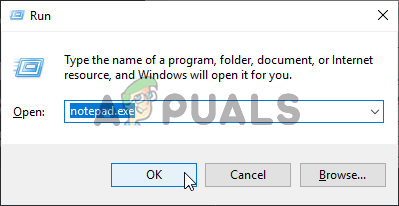
Running Notepad - Once you’re inside the elevated Notepad window, paste the following commands inside the blank notepad window:
net stop bits net stop wuauserv net stop appidsvc net stop cryptsvc Del "%ALLUSERSPROFILE%\Application Data\Microsoft\Network\Downloader\qmgr*.dat" Del %windir%\SoftwareDistribution\*.* /S /Q Ren %windir%\system32\catroot2 catroot2.bak sc.exe sdset bits D:(A;;CCLCSWRPWPDTLOCRRC;;;SY)(A;;CCDCLCSWRPWPDTLOCRSDRCWDWO;;;BA)(A;;CCLCSWLOCRRC;;;AU)(A;;CCLCSWRPWPDTLOCRRC;;;PU) sc.exe sdset wuauserv D:(A;;CCLCSWRPWPDTLOCRRC;;;SY)(A;;CCDCLCSWRPWPDTLOCRSDRCWDWO;;;BA)(A;;CCLCSWLOCRRC;;;AU)(A;;CCLCSWRPWPDTLOCRRC;;;PU) cd /d %windir%\system32 regsvr32.exe /S atl.dll regsvr32.exe /S urlmon.dll regsvr32.exe /S mshtml.dll regsvr32.exe /S shdocvw.dll regsvr32.exe /S browseui.dll regsvr32.exe /S jscript.dll regsvr32.exe /S vbscript.dll regsvr32.exe /S scrrun.dll regsvr32.exe /S msxml.dll regsvr32.exe /S msxml3.dll regsvr32.exe /S msxml6.dll regsvr32.exe /S actxprxy.dll regsvr32.exe /S softpub.dll regsvr32.exe /S wintrust.dll regsvr32.exe /S dssenh.dll regsvr32.exe /S rsaenh.dll regsvr32.exe /S gpkcsp.dll regsvr32.exe /S sccbase.dll regsvr32.exe /S slbcsp.dll regsvr32.exe /S cryptdlg.dll regsvr32.exe /S oleaut32.dll regsvr32.exe /S ole32.dll regsvr32.exe /S shell32.dll regsvr32.exe /S initpki.dll regsvr32.exe /S wuapi.dll regsvr32.exe /S wuaueng.dll regsvr32.exe /S wuaueng1.dll regsvr32.exe /S wucltui.dll regsvr32.exe /S wups.dll regsvr32.exe /S wups2.dll regsvr32.exe /S wuweb.dll regsvr32.exe /S qmgr.dll regsvr32.exe /S qmgrprxy.dll regsvr32.exe /S wucltux.dll regsvr32.exe /S muweb.dll regsvr32.exe /S wuwebv.dll netsh winsock reset netsh winhttp reset proxy net start bits net start wuauserv net start appidsvc net start cryptsvc
- Once the script is successfully pasted inside the Notepad window, go to File > Save As. After you establish a location where you want to save the script, name it however you want, but make sure you change the extension at the end to .bat.
- Click Save to produce the .bat file, then right-click on the newly created file and choose Run as administrator to run the script.
- Run the script, then wait until all commands are processed. Once the script is finished, close the elevated CMD prompt and install the Windows Update that was previously causing the Windows Update Error C80003F3.

If the same problem is still occurring, move down to the next method below.
Method 6: Uninstalling Commodo firewall (if applicable)
As it turns out if you’re using Commodo antivirus on an older Windows version like Windows 7 or Windows Vista. There are a couple of Commodo firewall versions (particularly versions older than v3.0.15.277) that will cause this error with new Windows Updates.
Several users that found themselves in a similar situation have managed to resolve it and install the failing update by getting rid of the 3rd party firewall solution first. As it turns out, switching to the native firewall will no longer trigger this particular behavior. This suggests the possibility that Commodo firewall tends to be overprotective in certain situations.
Here’s a quick guide on uninstalling Commodo firewall and removing any remnant files:
- Press Windows key + R to open up a Run dialog box. Once you’re inside the Run dialog box, type “appwiz.cpl” and press Enter to open up the Programs and Features screen.

Typing in “appwiz.cpl” in the Run prompt - Once you’re inside the Programs and Features screen, scroll down through the list of installed applications and locate Comodo firewall. When you see it, right-click on it and choose Uninstall from the newly appeared context menu.

Uninstalling Commodo antivirus - Follow the on-screen prompts to complete the uninstall process.
- Make sure you remove any remnant file that might still interfere with the Windows Update component by following the instruction (here).
- Restart your computer and see if the issue is resolved at the next system startup.





